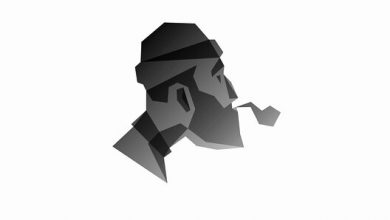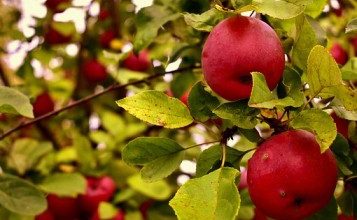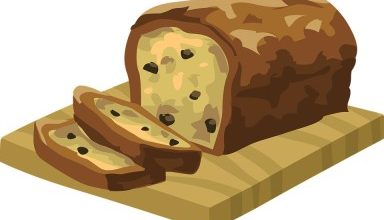
You Begin by Margaret Atwood is a poem with six stanzas which are made up of uneven number of lines. The first and fourth stanzas have nine lines, the second has six, the third has five and the fifth and the sixth stanzas have three lines each. There is no rhyme pattern but there are scattered instances of rhyme, repetition and moments of internal rhyme as well as half or slant rhyme. Repetition is given focus throughout the poem. Atwood makes use of informal and casual words and sayings throughout.
You Begin | Summary and Analysis
You Begin | Analysis, Line 1 – 9 (Stanza 1)
You begin this way:
this is your hand,
this is your eye,
this is a fish, blue and flat
on the paper, almost
the shape of an eye
This is your mouth, this is an O
or a moon, whichever
you like. This is yellow.
The poem begins with the speaker talking to a child. She begins telling the child about their body parts and introducing them to their hands. The author talks about ‘beginning’ in the first line. It is possible that she is talking to a newborn child or a toddler and explaining their anatomy to them. She also relates the shape of a fish to the eye of the child. She also compares the shape of their mouth to an ‘O’ or maybe the moon. It can be whatever they want it to be. The author is telling them that her mouth which forms words has the power to be anything. The power of words is justified here. The stanza ends on an abrupt note when the author tells the child about the colour yellow. Yellow is generally related to happiness and is a joyful colour. The author is telling the child all the marvels of existing and the art of human body and life.
You Begin | Analysis, Line 10 – 15 (Stanza 2)
Outside the window
is the rain, green
because it is summer, and beyond that
the trees and then the world,
which is round and has only
the colors of these nine crayons.
The author continues the last stanza by going through the list of a few more colours. She spots the colour green of the grass outside the window. Because there is rain and ‘it is summer’. The stanza again confirms the suspicion of the reader that the listener is quite a young person since the author is explaining every single aspect of human life to them. The poem continues the joyful note that it has set out on. Though rain is often related to be melancholic, the speaker speaks of rain as a source of growth for the grass outside in the garden. The speaker places a box of nine crayons in front of the child and tells them that it has all the colours that the world has. This gives the child something to imagine the outside world as. This is a way of empowering the young mind and giving them the ability to view the world and draw it from their perspective.
You Begin | Analysis, Line 16 – 21 (Stanza 3)
This is the world, which is fuller
and more difficult to learn than I have said.
You are right to smudge it that way
with the red and then
the orange: the world burns.
The speaker begins the stanza by saying that the world is vast compared to human beings. She says that her words don’t do the vastness of the world justice. Though the speaker considers herself knowledgeable about the world, she agrees that even she can’t describe the world properly in all its beauty. The speaker further tells the child that they are allowed to make mistakes and learn from them. The message here is powerful because the speaker is comparing the world to the canvas and the smudges made on the paper with the mistakes the child will grow up to do in real lifetime. All humans learn from their mistakes and the speaker is telling this fact to the child in their early days. The child is allowed to make mistakes and smudge up orange and yellow colours to learn how to draw perfectly.
You Begin | Analysis, Line 22 – 30 (Stanza 4)
Once you have learned these words
you will learn that there are more
words than you can ever learn.
The word hand floats above your hand
like a small cloud over a lake.
The word hand anchors
your hand to this table
your hand is a warm stone
I hold between two words.
The speaker again explains the vastness, but this time, of words. She says that when a child will learn to recognize all these words and knows to use them. The child will learn that there are many more words out there. The speaker means to say here that no human is all knowing, there are many words that one may not know in their lifetime. The speaker tells the child that she will not be able to learn each and every word that exists because words are numerous in quantity. No human can learn all the words. The speaker then says that there is a ‘word hand’ meaning all the things that exist can be defined using words. This personification is a way to make the child feel like they are wrapped in a blanket of comfort and they have something to hold onto at all times. She is holding the child’s hands between two words; the words could be anything but the focus is on their existence. The speaker is making the child understand the concept of the existence of language and words and how they play a crucial role in human life.
You Begin | Analysis, Line 31 – 34 (Stanza 4)
This is your hand, these are my hands, this is the world,
which is round but not flat and has more colors
than we can see.
The speaker holds the child’s hands and makes them see again that it is a ‘hand’. The speaker repeats the lines said earlier to emphasize the facts that the earth is round and has more colours that human eye can see. This is ironic because before, the speaker said that there are only nine colours in the world; the change means that she is introducing the child to the realities of the world and making them know the vastness that exists in the world. The world is more than we can imagine and human beings can begin to comprehend the vastness that exists.
You Begin | Analysis, Line 22 – 30 (Stanza 4)
It begins, it has an end,
this is what you will
come back to, this is your hand.
The speaker assures the child that though the world seems very vast, it does have a beginning and an end like every other thing that exists; the world is not ever lasting. The speaker concludes by saying that no matter wherever the child goes, all the things will come back to them and their existence. The repition of ‘hand’ is a metaphor for the fact that the human beings can always pave their own path with their own hands no matter what happens.
You Begin | About the Author – Margaret Atwood
Margaret Eleanor Atwood (born November 18, 1939) is a Canadian poet, novelist, literary critic, essayist, teacher, environmental activist, and inventor. Since 1961, she has published 18 books of poetry, 18 novels, 11 books of non-fiction, nine collections of short fiction, eight children’s books, and two graphic novels, and a number of small press editions of both poetry and fiction. A number of her works have been adapted for film and television. Atwood’s works encompass a variety of themes including gender and identity, religion and myth, the power of language, climate change, and “power politics”. Many of her poems are inspired by myths and fairy tales which interested her from a very early age.




